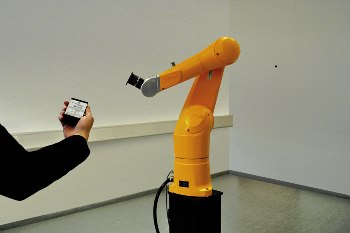Researchers from the Fraunhofer Institute have designed a hand-held input equipment to enable easy control of a robotic arm comprising six joints.
 Fraunhofer Robotic Arm
Fraunhofer Robotic Arm
At the Sensor Test exhibition scheduled to take place next month, visitors can avail the opportunity to exercise control over the robotic arm designed for industrial purposes. When the users use the hand-held equipment to make hand movements, the robot replicates the user’s action. The hand-held equipment is built with a range of sensors including inertial sensors.
The sensors were economical, but it was a difficult process for researchers to facilitate the interaction of sensors with each other to generate accurate motion. The project was undertaken by a research team under the supervision of Bernhard Kleiner of the Fraunhofer Institute. The team formulated special algorithms that combine the data from individual sensors to recognize a pattern of movement, which can be used to identify movements in free space.
The sensor system can be used to carry out light tasks in industrial production. The basic technology implemented in the system makes it useful as an accurate medical measuring tool. When attached to a patient’s upper thigh, the sensor system can be used to detect the patterns of movement, without affecting the patient’s action. This system can assist physicians to help patients with Parkinson’s disease and to gain control of active prostheses that comprises many tiny actuators.